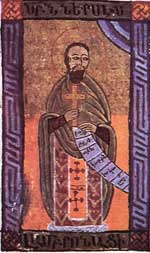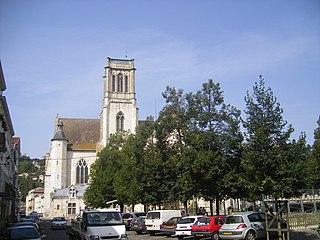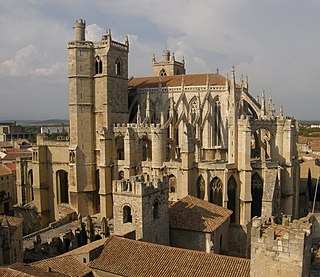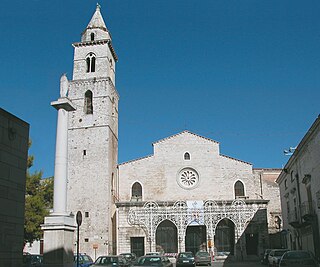Pope Boniface IV was the bishop of Rome from 608 to his death. Boniface had served as a deacon under Pope Gregory I, and like his mentor, he ran the Lateran Palace as a monastery. As pope, he encouraged monasticism. With imperial permission, he converted the Pantheon into a church. In 610, he conferred with Bishop Mellitus of London regarding the needs of the English Church. He is venerated as a saint in the Catholic Church with a universal feast day on 8 May.
Pope Stephen IV was the bishop of Rome and ruler of the Papal States from June 816 to his death. Stephen belonged to a noble Roman family. In October 816, he crowned Louis the Pious as emperor at Rheims, and persuaded him to release some Roman political prisoners he held in custody. He returned to Rome, by way of Ravenna, sometime in November and died the following January.

The Third Council of the Lateran met in Rome in March 1179. Pope Alexander III presided and 302 bishops attended. The Catholic Church regards it as the eleventh ecumenical council.

Pope Leo XI, born Alessandro Ottaviano de' Medici, was head of the Catholic Church and ruler of the Papal States from 1 April 1605 to his death. His pontificate is one of the briefest in history, having lasted under a month. He was from the prominent House of Medici originating from Florence. Medici's mother opposed his entering the priesthood and sought to prevent it by having him given secular honours, but after her death he eventually was ordained a priest in 1567. In his career he served as Florence's ambassador to the pope, Bishop of Pistoia, Archbishop of Florence, papal legate to France, and as the cardinal Prefect for the Congregation of the Bishops and Religious. He was elected to the papacy in the March 1605 papal conclave and served as pope for 27 days.

Pope Eugene IV, born Gabriele Condulmer, was head of the Catholic Church and ruler of the Papal States from 3 March 1431 to his death. Condulmer was a Venetian, and a nephew of Pope Gregory XII. In 1431, he was elected pope. His tenure was marked by conflict first with the Colonnas, relatives of his predecessor Martin V, and later with the Conciliar movement. In 1434, due to a complaint by Fernando Calvetos, bishop of the Canary Islands, Eugene IV issued the bull "Creator Omnium", rescinding any recognition of Portugal's right to conquer those islands, still pagan. He excommunicated anyone who enslaved newly converted Christians, the penalty to stand until the captives were restored to their liberty and possessions. In 1443 Eugene decided to take a neutral position on territorial disputes between Portugal and Castile regarding rights claimed along the coast of Africa. He is the last pope to date to take on the pontifical name "Eugene".

Pope Cyril V of Alexandria , 112th Pope of Alexandria & Patriarch of the See of St. Mark for 52 years, 9 months and 6 days. He was the longest-serving Pope in the history of the Coptic Orthodox Church. He was born as Youhanna (John) in 1824 or 1830/1831 according to different accounts and he died on 7 August 1927.

The Diocese of Beauvais, Noyon, and Senlis is a Latin Church ecclesiastical territory or diocese of the Catholic Church in France. The diocese encompasses the department of Oise in the region of Hauts-de-France. The diocese is a suffragan of the metropolitan Archdiocese of Reims. The current bishop is Jacques Benoit-Gonnin, appointed in 2010.

The Roman Catholic Diocese of Coutances (–Avranches) is a diocese of the Roman Catholic Church in France. Its mother church is the Cathedral of Coutance in the commune of Coutances in France. The diocese is suffragan of the Archbishop of Rouen and comprises the entire department of Manche. It was enlarged in 1802 by the addition of the former Diocese of Avranches and of two archdeaconries from the Diocese of Bayeux. Since 1854 its bishops have held the title of Bishop of Coutances (–Avranches).

Saint Nerses of Lambron (1153–1198) was the Archbishop of Tarsus in the Armenian Kingdom of Cilicia who is remembered as one of the most significant figures in Armenian literature and ecclesiastical history.

The Diocese of Agen is a Latin Church ecclesiastical territory or diocese of the Catholic Church in France.
Roger of Worcester was Bishop of Worcester from 1163 to 1179. He had a major role in the controversy between Henry II of England, who was Roger's cousin, and Archbishop Thomas Becket.

The former Catholic diocese of Narbonne existed from early Christian times until the French Revolution. It was an archdiocese, with its see at Narbonne, from the year 445, and its influence ran over much of south-western France and into Catalonia.

The Italian Catholic diocese of Andria is in Apulia, seated at Andria Cathedral which is built over a church dedicated to St. Peter, about ten miles southwest of Trani. It is a suffragan of the archdiocese of Bari-Bitonto. The diocese has 39 parishes, with one priest for every 1,573 Catholics.

Pont-Saint-Martin is a commune in the Loire-Atlantique department in western France.

The House of Carafa or Caraffa is a noble Neapolitan family of Italian nobles, clergy, and men of arts, known from the 12th century.
Giovanni de Surdis Cacciafronte was an Italian Roman Catholic priest and bishop from the Order of Saint Benedict. He served as the Bishop of Mantua from 1174 until his resignation in 1177 and held the position of Bishop of Vicenza from 1179 until his murder. The schism that Antipope Victor IV caused enabled him to proclaim his support for Pope Alexander III though leading to his removal from a position at the behest of Frederick Barbarossa.
Pietro Vecchia, O.S.B. was a Roman Catholic prelate who served as Bishop of Molfetta (1691–1695) and Bishop of Andria (1690–1691).
Alessandro Egizio (1597–1689) was a Roman Catholic prelate who served as Bishop of Andria (1657–1689).
Alessandro Strozzi was a Roman Catholic prelate who served as Bishop of San Miniato (1632–1648) and Bishop of Andria (1626–1632).












